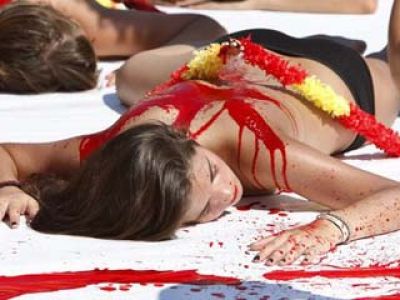Corrida de torros or la fiesta takes place in Spain, Portugal, southern France, Mexico, Colombia, Peru, Venezuela and Philippines.
Bulls before fighting have an extremely good life. They spend their time grazing on the meadows, everybody takes care about them and gives them whatever they need. For Corrida's followers it is an honor for a bull to die on the arena with applause of the spectators. They treat it as an art which connects in one perfect piece of music, dancing, horse riding and amazing costumes.

Opponents of bullfighting talk about animals rights, barbaric blood sport and torturous death. In many countries people vote against this kind of entertainment. In Spain in two provinces: Catalonia and Basque Country it is forbidden to organize it.
Spanish Corrida
Bulls are about four or six years old. There are three matadors and everyone fights with two bulls. Matadores are assisted by two picadores, three toreros and a mozo de espadas. Picadores ride on a horseback with a lance. Horses are also protected by padded cover to prevent death by bleeding. Anyway many of these beautiful animals had died during bullfighting.
The toreros irritate the bull by yellow- pink capa (sheet). Next, one of the picador on the horseback hits his lanca into the bull's neck as well. Also banderilleros try to stick short lancas (banderilleros) into the bull's neck. The Lancas have colorful ribbons which have to annoy bulls as well. After that when animal is weaker and his head is lower the matador comes. He has a red muleta and tries to make the bull tired. When animal is exhausted, he sticks lanca into his spinal cord. If matador kills the bull by first time, the audience will admire him with an applause. If he does not kill it he will try again.

 Muleta
Muleta And this is over. Bull is dead. Matador can cut an ear of the bull. If the performance was fantastic the audience let matador cut other ear. Sometimes a tail.
The dead bull is covered by sheets and moved by horses and mules.

Corrida's opponents picture
The largest Corrida takes place in Mexico City on the Plaza Mexico. The oldest one in Sevilla in Spain on the La Maestranza (from 1765).







